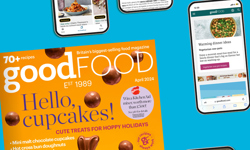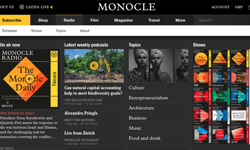Today is a big day on the tech calendar. Apple is launching its new iPhone, over nine years since the first version hit the market. Nine years! Where did the time go?
On the day Steve Jobs announced Apple’s first foray into the smartphone market back in 2007, I’d just joined Lord Heseltine’s ranks at Haymarket Media in London. Magazine sales were declining, but still healthy; the financial crash hadn’t happened… and I was still attractive to women in their 20s. Indeed, I was dating a moderately crazy 21-year-old, but that’s a tale for another time.
And my phone? Well, it was something mediocre from the LG stable that I mainly used to take out-of-focus photos, call people and text. The only app I used on it was an image-morphing thing that provided endless hours of amusement in the pub as we turned people’s faces – and cats, of course – into cones, rectangles and various other shapes.
Fast forward nine years and I head up Bauer’s mobile magazine content strategy. And my phone is now my primary source of communication, gaming, photography and content discovery.
I also have a girlfriend who, I am pleased to report, has yet to demonstrate any crazy tendencies. She’s a millennial too – just turned 31, the demographic who supposedly has abandoned magazines solely for the digital world.
Except, that’s not quite true. She does buy magazines. She is a fan of Take a Break for those moments between flights (she’s a pilot) when she needs something light to read that won’t distract from programing flight paths or calculating fuel loads. And, as she’s constantly knitting; she loves Knitting & Crochet, copies of which have mysteriously started appearing at strategic ‘knit points’ throughout my house.
But most interestingly of all is her digital content consumption. She’s on her phone almost constantly when off duty and uses four main apps: Facebook, WhatsApp, Pinterest and BuzzFeed.
I saw a stat from ComScore this morning that I found interesting and, given my other half’s phone habits, didn’t surprise me. It related to ‘the share of overall digital time spent on smartphone apps’ – specifically how, for the first time, we’re spending more than 50 per cent of our total time online within walled apps, solely on our phones.
I used to be an advocate of the potential of web apps, one build with HTML5 and accessible on the web across multiple devices and platforms. Because our digi mags would be browser-based, the problem of search was partially nullified, and they would work on all devices. At the very least, more people would be able to find and read them.
Native appeal
Now, given the increasing use of native apps, maybe that’s not the right approach. Discoverability is still a problem, but becoming less so. Apple is improving app-store search and ASO (App Store Optimisation) is a growing science in the same way standard search on browsers (SEO) was at the turn of the century. It’s within the publisher’s power to get their products right up the rankings.
Even more crucially, the ability to search for content within apps while outside of any app environment is becoming tangible.
Perhaps time spent in browsers on phones will decline further in the coming 12-24 months. After all, operating Safari on your iPhone is a bit fiddly. If you can simply launch your favourite app and be served a brilliant UX that gives you access to the specialist content you want, with no distraction and no hassle, in a fraction of the time, why use a browser? In the digital world, seconds and fractions of seconds make a difference.
Having talked to Apple, I know searching for content within walled apps while out of the app environment is an area they are pouring resource into. It makes sense for them to follow this path. After all, if you take people out of the browser environment and grow your device sales, then suddenly – dare I say it – Google’s search business seems almost vulnerable, given the growth of phone use and decline in desktop, laptops and tablet usage.
Sensibly, Apple is now also giving more control within its ecosystem to publishers. More price tiers have been introduced. We can now raise and lower prices of subscriptions without losing autorenew customers. When I worked for Autosport on their paywalled content strategy, one of the best subscription retention tools we had was to say, ‘as long as you don’t cancel your sub, you’ll only ever pay what you’re paying now’. It was an approach that rewarded loyalty, and it worked.
Churn is a problem for app subs. Now we have the incentive to reward loyalty within iOS, not only through prices but also through Apple paying 80% to the publisher for all renewing subs customers, we’ve got half a chance of lowering churn, upping revenues and upping growth.
So maybe, just maybe, all the pieces are coming together.
Firstly, we’re working on the package, the way we deliver our content. Phone first. Responsive templates. Reshaping magazine articles in the app according to analytics that tell us precisely the content and format our customers want. One build, all devices, intuitive software for small editorial teams to create a thing of beauty, fast – without compromising on resource or crippling the business through cost.
Secondly, a better CRM tool integrated within the software, working closely alongside an excellent analytics system, giving us the facility to market directly and intelligently to customers, depending on their purchase history and the content they like. To create pushes that contain GIFs, video clips and other smart content that will be a gateway into the app.
Thirdly, to incorporate better discoverability of our apps within app stores and, through targeted content search, break down the walls that previously have existed around native applications.
I don’t think the iPhone 7 release is going to revolutionise anything. But it, along with iOS 10, is paving the way towards something special this time next year that might just do precisely that. And strategically, I want to be ready for that moment.












